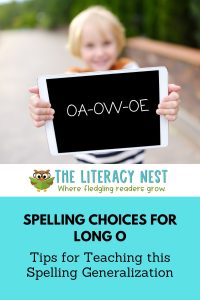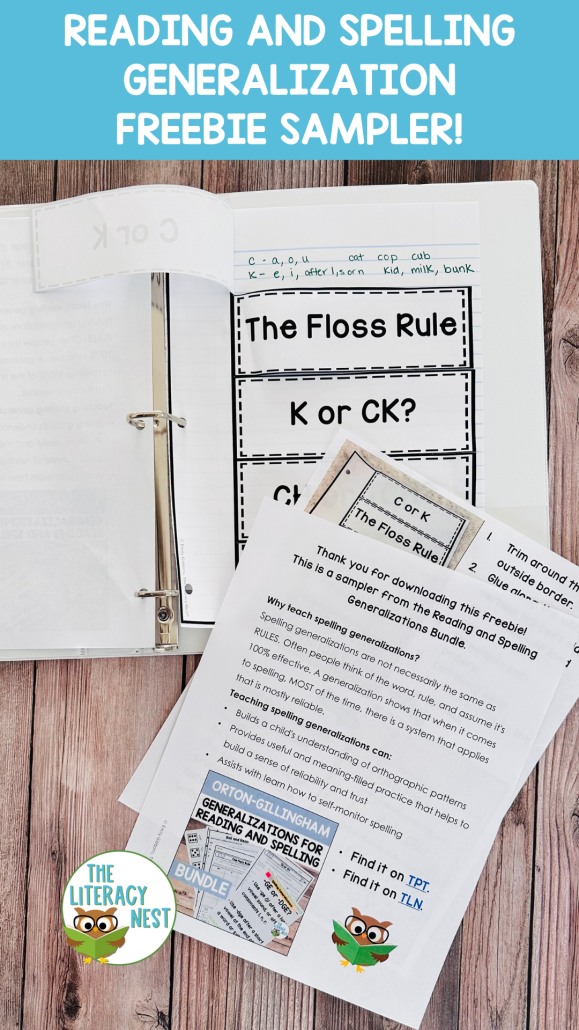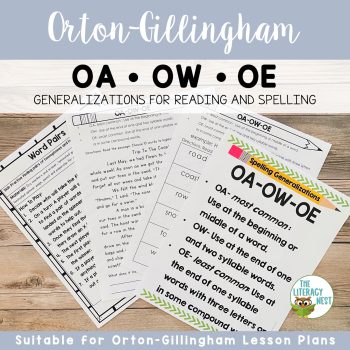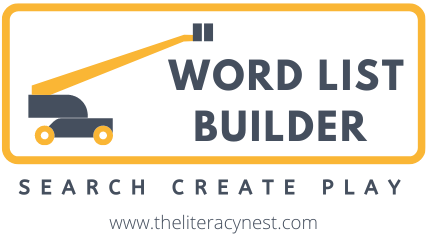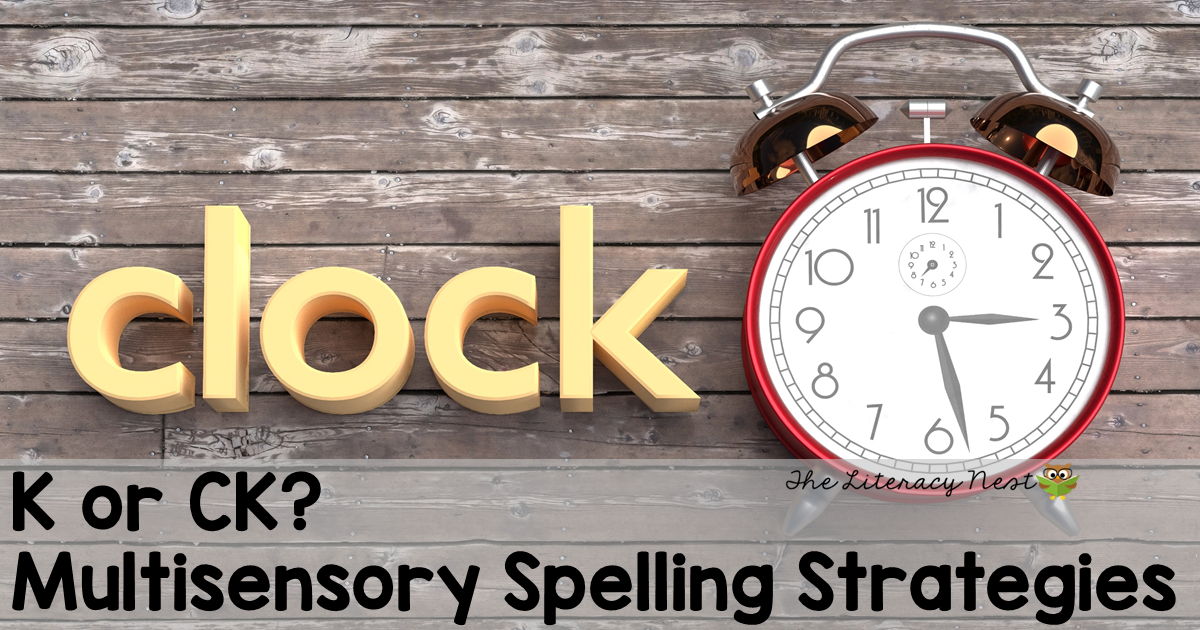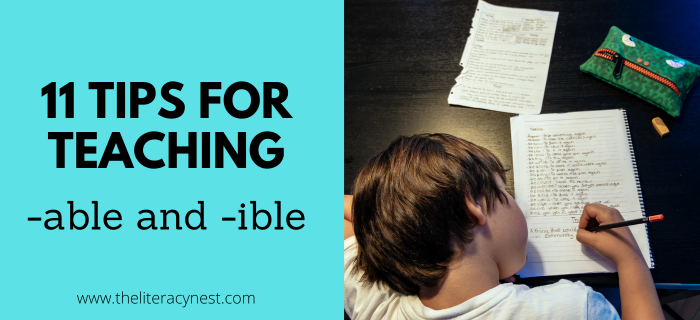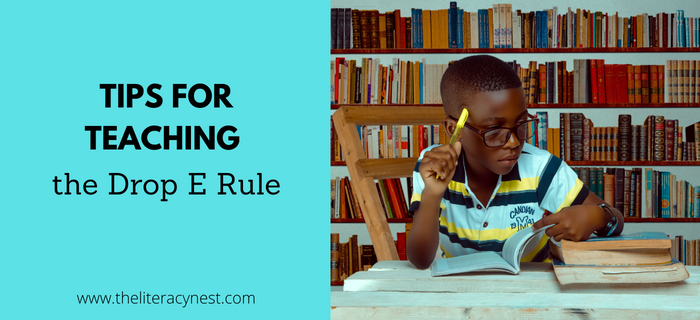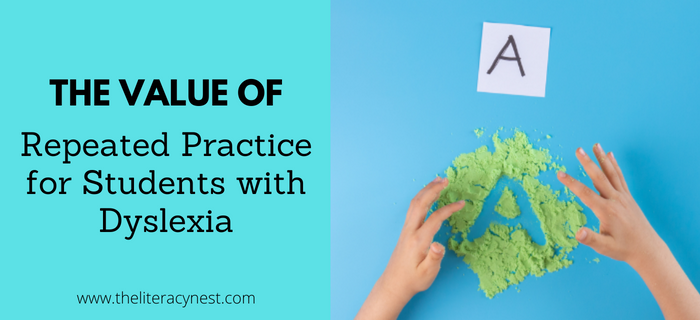Spelling Choices for Long O: Tips for Teaching this Spelling Generalization
Some spelling considerations are less about clear rules to follow than frequency and expectations. Such is the case for spelling the long o sound. O-e is the most common spelling for the long o sound in the middle of a word, but oa isn’t far behind. Ow is the most common way to spell the long o sound at the end of a word.
What then of oe? Or what about o by itself? In this post, you’ll find my tips for teaching spelling generalizations for long o.
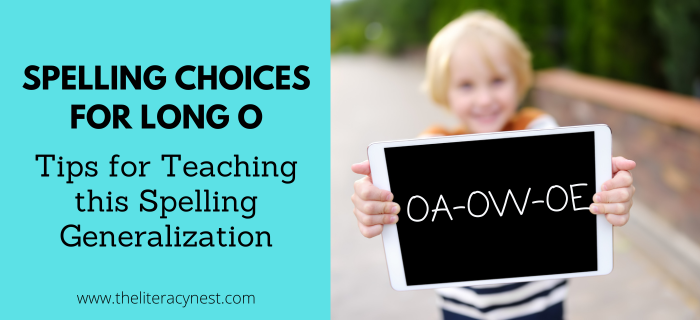
Roe Row Ro the Boat? Let’s Talk About Long O Sounds
Rather than teaching the usage of oa, oe, and ow as a separate lesson, it is something that I typically introduce when teaching each phoneme and revisit it often during dictation and SOS. It may be helpful to do a specific lesson on usage down the road or to maintain a chart of known words for each spelling pattern. This type of frequency-dependent spelling is well suited to creating picture stories as a way of remembering.
This is a spelling generalization you would teach well after VCe syllables, long o as an open syllable, and vowel teams OA, OW, and OE. This is also a time when homophones and homographs are really going to come in handy. Creating homophone dictionaries where students can write the words and illustrate them is a great way to help the meanings and the spellings stick.
You can read, Building An Understanding of Homophones for more tips!
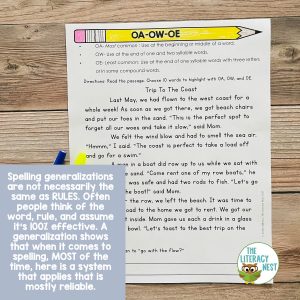
If we focus on the vowel teams, the first consideration for choosing a long o spelling is the position in the word:
- When the long o sound is at the beginning or middle of a word, oa would be the logical choice.
- At the end of words ow is the most frequent choice.
Some words that follow this spelling generalizations for long o include:
Oat coach boat soap toad
Throw window pillow grow snow
While this is quite straightforward, it is important to note that there is no way to tell without reading the word in context whether ow is pronounced as long o as in snow or ow as in cow. And in fact, this raises a perfect opportunity to address homographs (words that are spelled the same, pronounced differently, and that have a different meaning). You might introduce row as in an argument and row as in rowing a boat and sow meaning a mother pig and sow meaning to plant seeds. This is where having that homophone dictionary can come in handy.
A notable exception to ow at the end of words is when an irregular past tense is formed with n as in:
thrown grown blown
While oe is also typically found at the end of words, or words as part of longer compound words, it has a very limited and specific usage. I typically teach students that there are not a lot of words that end in oe and that they are typically short three and four-letter words. I make it a point to show students that those same 3 or 4-letter words might be part of a compound word.
Some words that follow this expectation include:
toe roe hoe foe woe tiptoe toenail
Long o is written as a single o at the end of many short words like no, go, and so. It is also used at the end of longer words, but typically those words come from other languages and are animals, food or musical terms. Some words that follow this pattern include:
hippo dingo mango taco banjo alto
In order to teach this spelling generalization, it is helpful for students to be able to:
- Segment 4 or 5 sounds,
- Be familiar with the vowel team syllable type and have already learned the multiple long o vowel teams. I suggest teaching the phonogram ow as in plow first before tackling the ending long o phonograms. I also find it is useful to teach ow much earlier than oe, based on frequency. It is important that students make their spelling choices for the base word before adding suffixes.
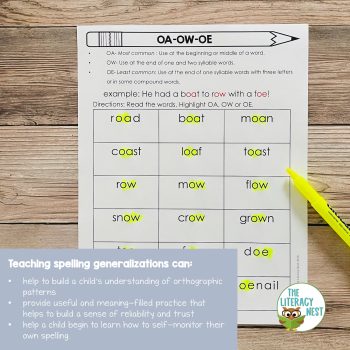
Students can use some guiding questions to help them make a decision when writing a new word:
- What is the base word?
- Where do I hear the vowel sound?
- Is this word or syllable one of the short words that might end in oe?
Download our printable guide to teaching Long O!
Download our Reading and Spelling Generalizations freebie sampler! It includes mini posters, a note-taker, and a handy cheat sheet with links to blog posts and a video with teaching tips!
Seven Spelling Ideas for Teaching Long O:
1. Sorting
You can sort words by spelling or sort pictures by vowel location to build phonemic awareness skills.
2. Start from the known
Many students have a collection of sight words such as no, go, toe, boat, and snow that they are already familiar with. These words can act as anchors to help students apply the spelling considerations.
3. Review activities
Playing games with spelling choices where students must choose oa or ow to complete a given word also reinforces this concept.
4. Dictation
When using long o words in dictation, it is helpful to provide some scaffolding with prompts letting students know if a word contains a vowel team or is written as an open syllable. Be aware and cautious of using homophones and be prepared to offer support to students as necessary.
5. Games
Incorporate words with oa, ow, and oe vowel teams frequently in review lists and games.
6. Spiral and Review
I recommend keeping the oa, ow, and oe vowel cards as part of the card drill, blending drill, and incorporating it into dictation often. Be aware that although students may be proficient with writing one-syllable words such as toe, grow and float, they may not be able to make phonogram decisions as readily when spelling longer and less familiar words such as toadstool, approach, marshmallow, shadow, and mistletoe.
7. Verbalize
It is valuable to have students verbalize how they know which spelling of the /o/ sound they are going to use based on its location in the word.
If you enjoyed these spelling generalizations for long o, be sure to catch the other spelling generalization blog posts HERE for LOTS more tips.
While learning about the long o spellings lacks the sort of predictable character of some other spelling rules, the complexities raised by homographs and homonyms make this a perfect time to support your student in becoming adept at using spell-checking tools, whether a dictionary or hand-held spell checking device.
GO HERE for a fun freebie game your kids might enjoy!
OA OW OE Spelling Generalizations for Orton-Gillingham Lessons
If you are looking for systematic and explicit phonics instruction, we’ve got you covered! This resource teaches the spelling generalization OA-OW-OE. It is compatible with Orton-Gillingham lesson plans, dyslexia interventions, and other reading interventions.
You can grab it in The Literacy Nest Shop or on TpT.
If you are seeking more advanced practice, check out this Spelling Generalizations bundle.
Are you looking for a list of words that follow the long o spelling generalizations? Word List Builder has got you covered!
Save time searching for long o words! Create customized and meaningful review, build your folder of words, create templates and games, and much more in Word List Builder.
